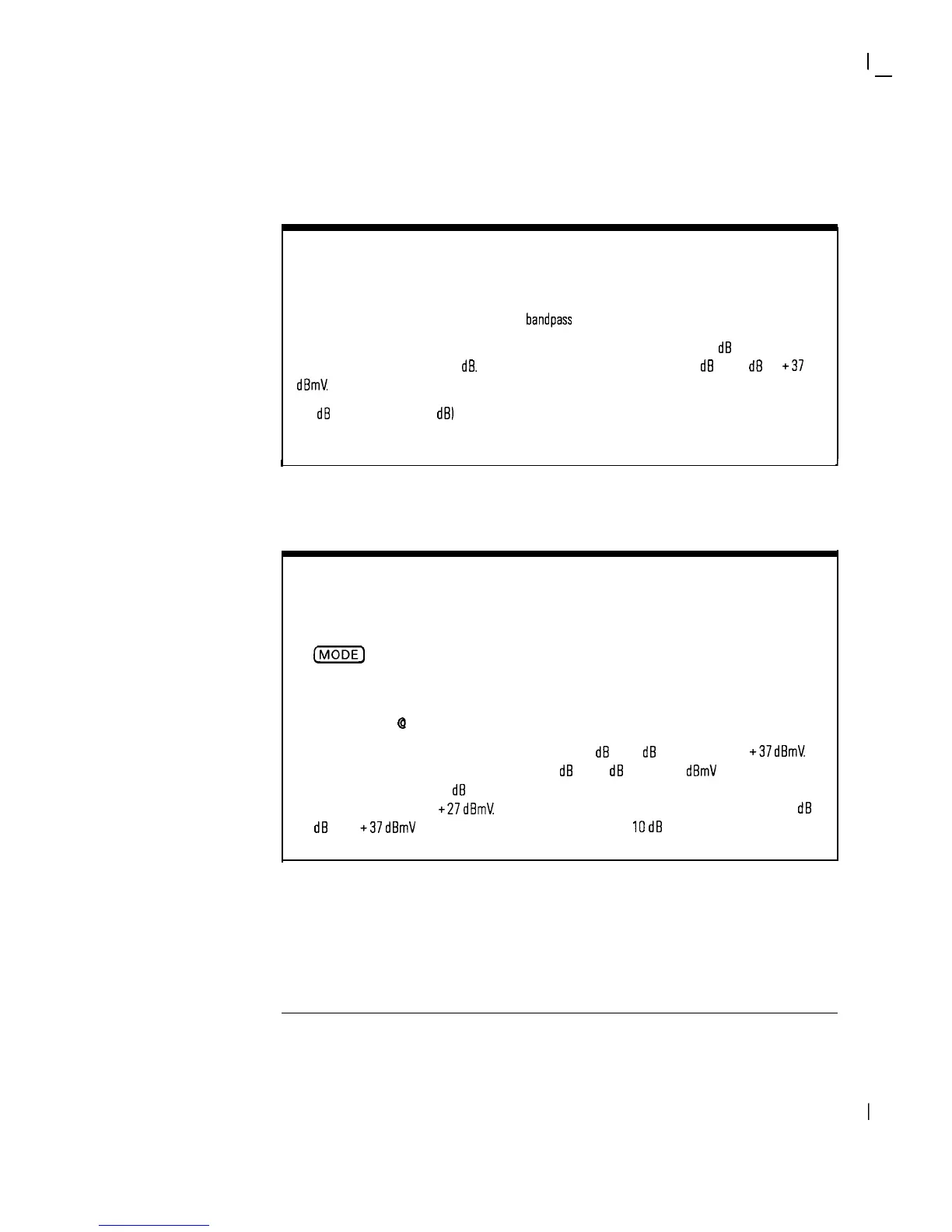I
-
Channel Measurements
Making Channel Measurements
Optimizing the Dynamic Range
Limiting the number of carriers input to the analyzer allows the measurement routine to select a lower
attenuator value. Hence a lower noise floor. This can be done with individual channel filters, a high
pass filter, a low pass filter or an adjustable
bandpass
filter.
When the attenuator switches to the next higher value, the noise floor raises 10
dB
which degrades
the signal to noise ratio by 10
dB.
For C/N, the attenuator switches from 0
dB
to 10
dB
at
+37
dBmV
Keeping the total power just below that will obtain the best signal to noise.
A 1
dB
for smaller than 10
dBI
step attenuator used in conjunction with a filter will provide the best
coverage of signal range for optimizing the total power at the input.
I
1
Optimizing the Total Power at the Input
If the analyzer correction value dictates that it is necessary to optimize the analyzer noise floor for a
particular configuration, press the following keys:
@mq
CABLE TV ANALYZER Setup Analyzer Input
TOTL PWR
(P
INPUT
For carrier to noise, the attenuator switch point from 0
dB
to 10
dB
attenuation is at
+37
dBmV
It
follows that the attenuator switch point from 10
dB
to 20
dB
is at + 47
dBmV
and increments
proportionately with each 10
dB
step in attenuation. For distortion measurements of CSO and CTB the
attenuator switch point is
+27
dBmV
Then it follows that the attenuator switch point from 10
dB
to
20
dB
is at
+37
dBmV
and increments proportionately for each
IO
dB
attenuator switch point.
2-21

